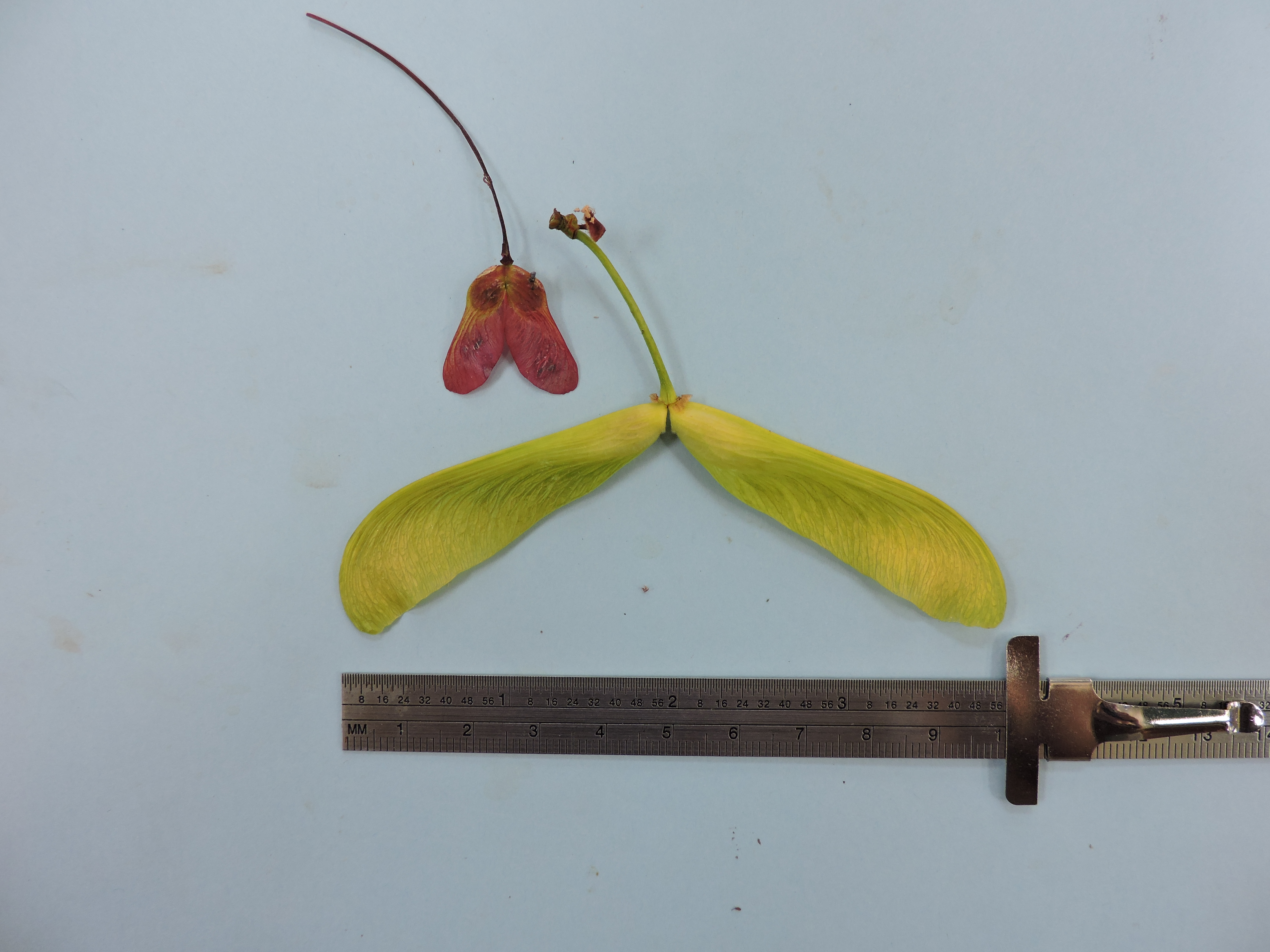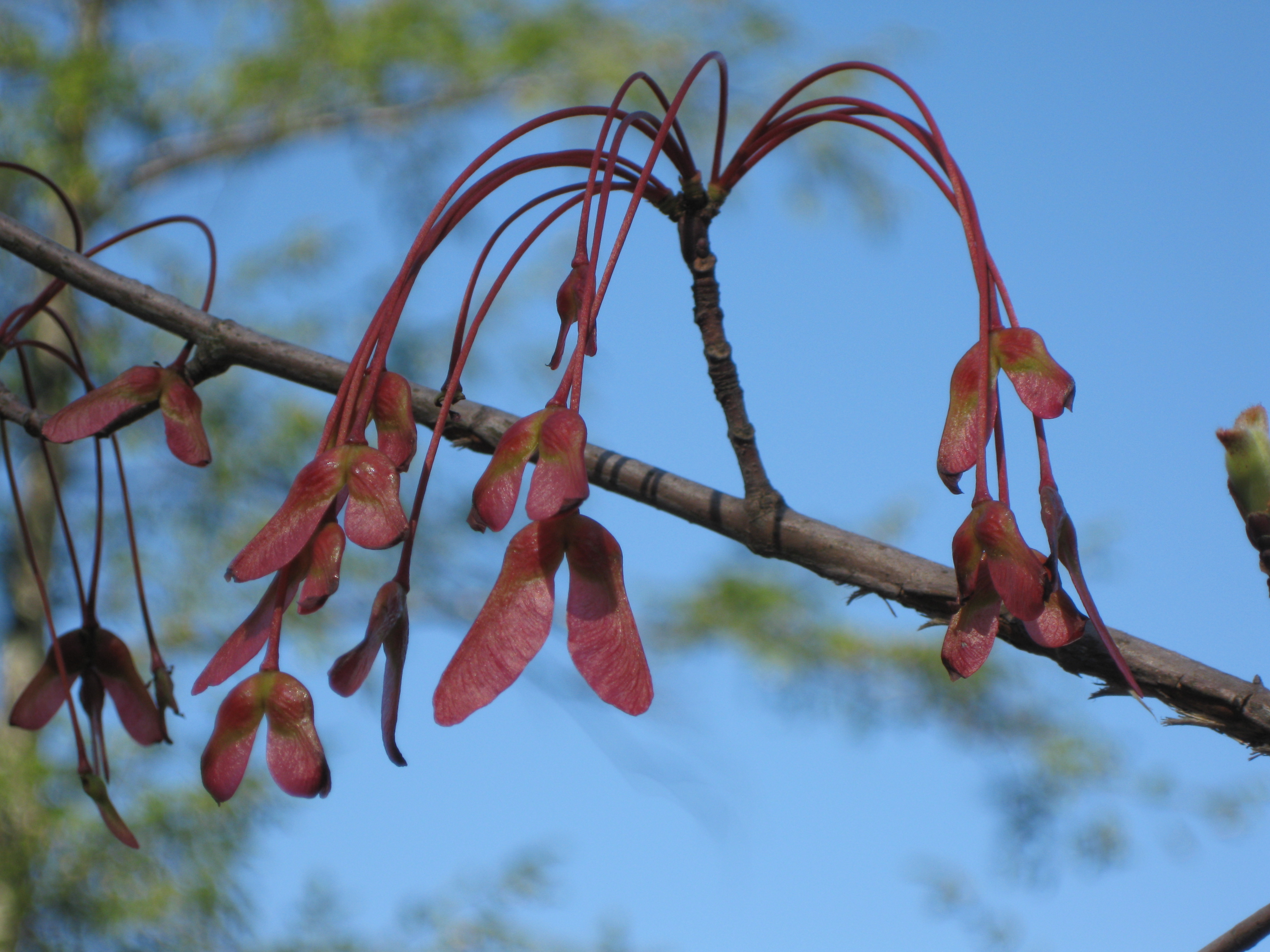Red, Sugar and Silver Maple Browse
We always have to keep in mind that chemical constituents vary across species in any given genus. For example, all oaks have tannins, but some oak species are higher in tannins than other oak species. Since toxic reactions are often linked to quantity—“the dose makes the poison”—these variations should be kept in mind.
When it comes to maple browse and greens, we should be mindful of the exact species we offer . Red maple (Acer rubrum) has toxic constituents in browse that can be dangerous when ingesting wilting and dried leaves. The plant is not cyanogenic, but has similar effects and has been lethal to horses. And, I have not seen any indication that seeds are toxic, from any of the maple species.
Red maple browse and greens are widely reported in the literature to be problematic. Cornell University College of Agriculture and Life Sciences Department of Animal Sciences researched into the mechanisms behind red maple toxicosis. Their findings lead them to suspect that– in addition to red maple– both sugar and silver maple could also be problematic, so all maples should be avoided for horses and any equine species. You will have to decide whether to ban all maple species as browse in your practice or not.
In Virginia most silver and sugar maples are in the west half of the state. Red maples occur throughout Virginia. In addition to the many native Virginia maples, there are a lot of ornamental, cultivated varieties that landscapers use. In our database, sixteen animals are listed on as utilizing some species of maple bark or browse in their diets.
So, if you determine you do want to use maple browse and greens to feed animals, how do you identify the maples to avoid from the many other maples that may be safe to use for browse? The chart below will compare some features of our native maples, but remember, there are a lot of cultivars out there, so it could get confusing, especially for yard landscape trees.
Also, here’s a great identification website for New England, Go Botany.
And also, tree identification key you can use from the Arbor Day Foundation.
Describing leaves and seeds
In natural woodlands, red maples tend to be smaller, understory trees that grow singly, for the most part. Groups or stands of maple may be a sugar maple, or another maple. The easiest ways to compare maple species for beginners is either looking at the leaves or the “helicopter” seeds, called samaras.
Always look at a few different leaves or samaras from the same tree, not just one. And use the largest, full-size leaves.
Start by counting the leaf lobes. Lobes each have their own main vein. On many maple leaves, there are two smallish teeth at the base of the leaf, closest to the leaf stem with no vein. These are not lobes themselves, but teeth on the lowest two lobes—that can be confusing.
The terminal lobe of a maple leaf is the lobe directly opposite the stem on the central axis. The base of that lobe (part of lobe closest to center of the leaf) can be either wider or narrower, straight-sided or angled inward or outward.
The sinus is the place where two lobes’ bases meet. Sometimes these are “U shaped” and sometimes they are more “V” shaped. Sinuses can be shallow in that they barely intrude into the leaf face or they can plunge deeply in towards the center leaf axis.
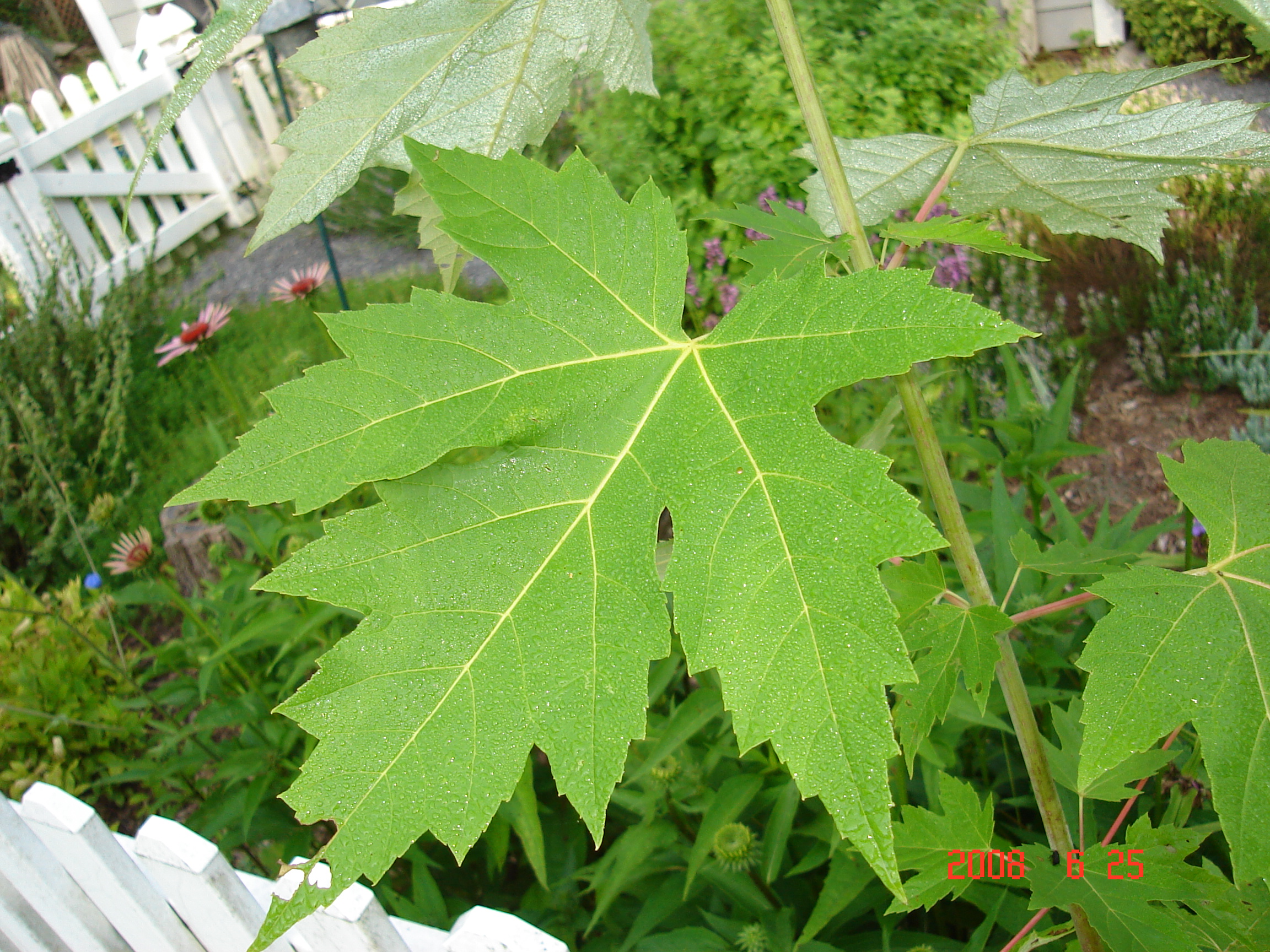
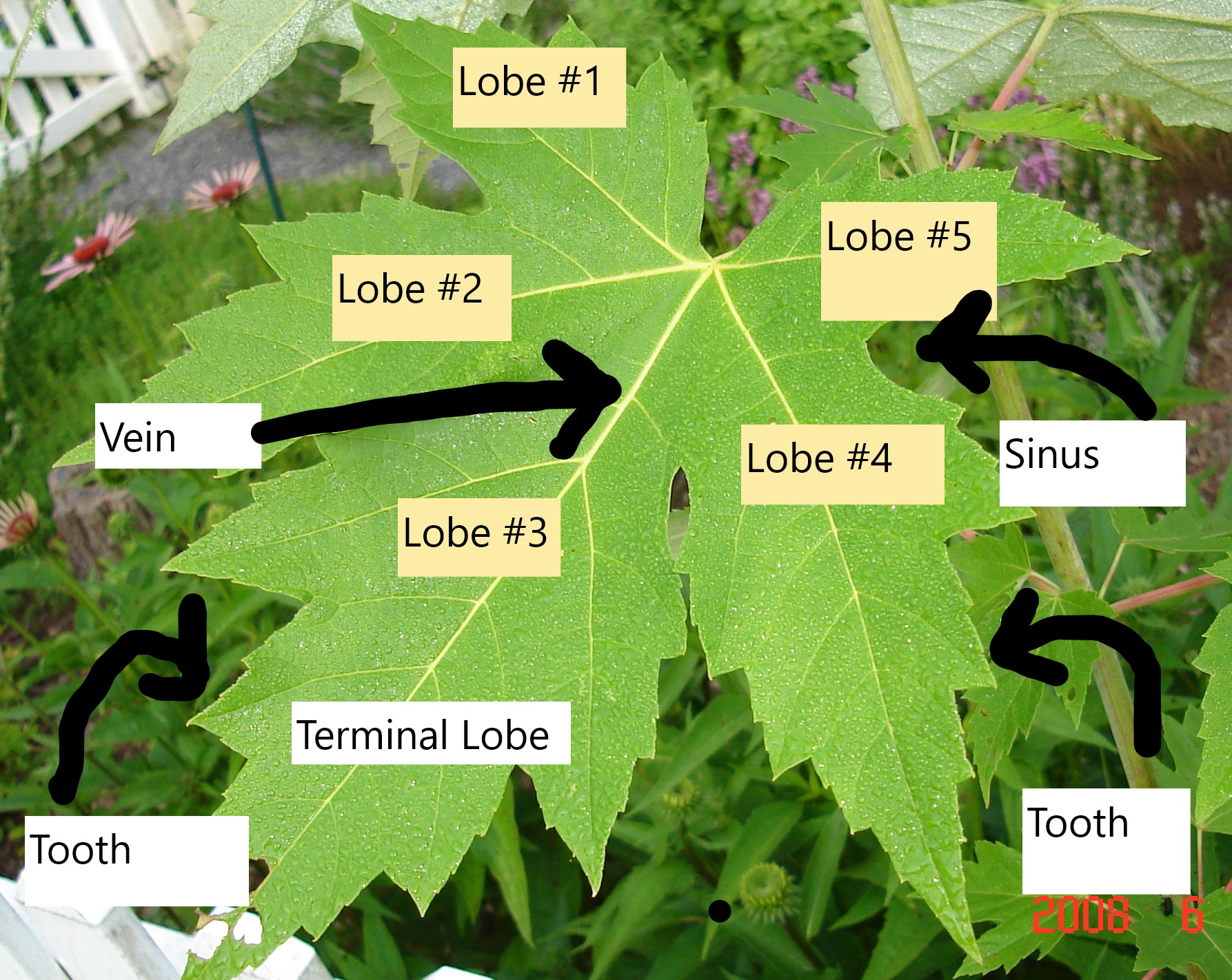
Virginia’s Native Maple Leaves
| Species | Botanical name | # Lobes | Terminal lobe | Teeth | Sinus | Underside of leaf | Leaf Size |
| Red- potentially toxic browse | Acer Rubrum | 3-5 | Lobe is widest at base of lobe | Many teeth on all lobes | V-cut sinuses are very shallow | White | 2-6” long |
| Silver-potentially toxic browse | Acer saccharinum | 5 thin lobes | Lobe angles inward at narrow base | Many small double toothed teeth | U to V-cut sinuses cut deeply in towards axis | Silver-white | 2.5-5” long |
| Sugar- potentially toxic browse | Acer saccharum | 5-7 | Sides parallel each other at lobe base | 0-3 large teeth on each lobe | U- shaped sinuses, shallow to moderate deep sinuses | Lighter color than top of leaf, but not silver or white | 3-5” long and wide |
| Southern Sugar | Acer floridanum | 5-7 | Sides parallel or angle inward at lobe base | 0-5 large teeth per lobe | Sinuses are deep | Leaf top pale, underside grayish-silver | 1.5-4.5” wide |
| Black | Acer nigrum | 3-5 | Sides parallel each other at base of lobe, wide base | 0-3 large teeth per lobe | U- sinuses shallow | Lighter color than top of leaf, but not silver or white | 3-6” |
| Striped | Acer pensylvanicum | 3 | Lobe is widest at base of lobe | Many fine teeth on all lobes | U- very shallow sinuses | Lighter color than top of leaf, but not silver or white | 5-8” long |
| Norway | Acer platanoides | 5 | Sides parallel each other at base of lobe | 0-5 large, irregular teeth per lobe | U- rather shallow | Leaf stem has milky sap when broken. | |
| Mountain | Acer spicatum | 5 | Lobe is widest at base of lobe | Many teeth on all lobes | V- shallow | Lighter color that top of leaf, but not silver or white | 3”- 4.5” long and wide |
(from Common Native Trees of Virginia, Virginia Department of Forestry, used with permission.)
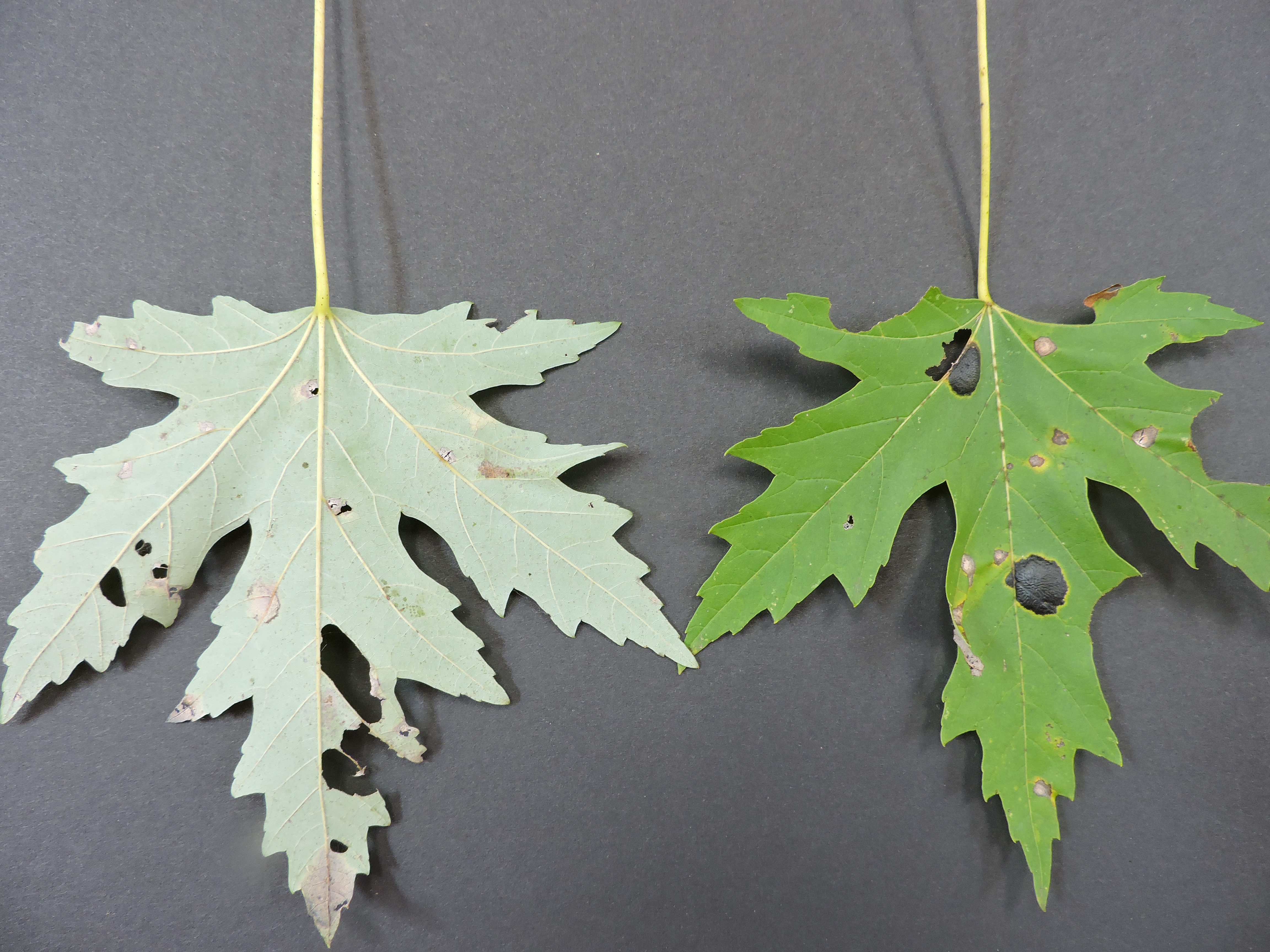
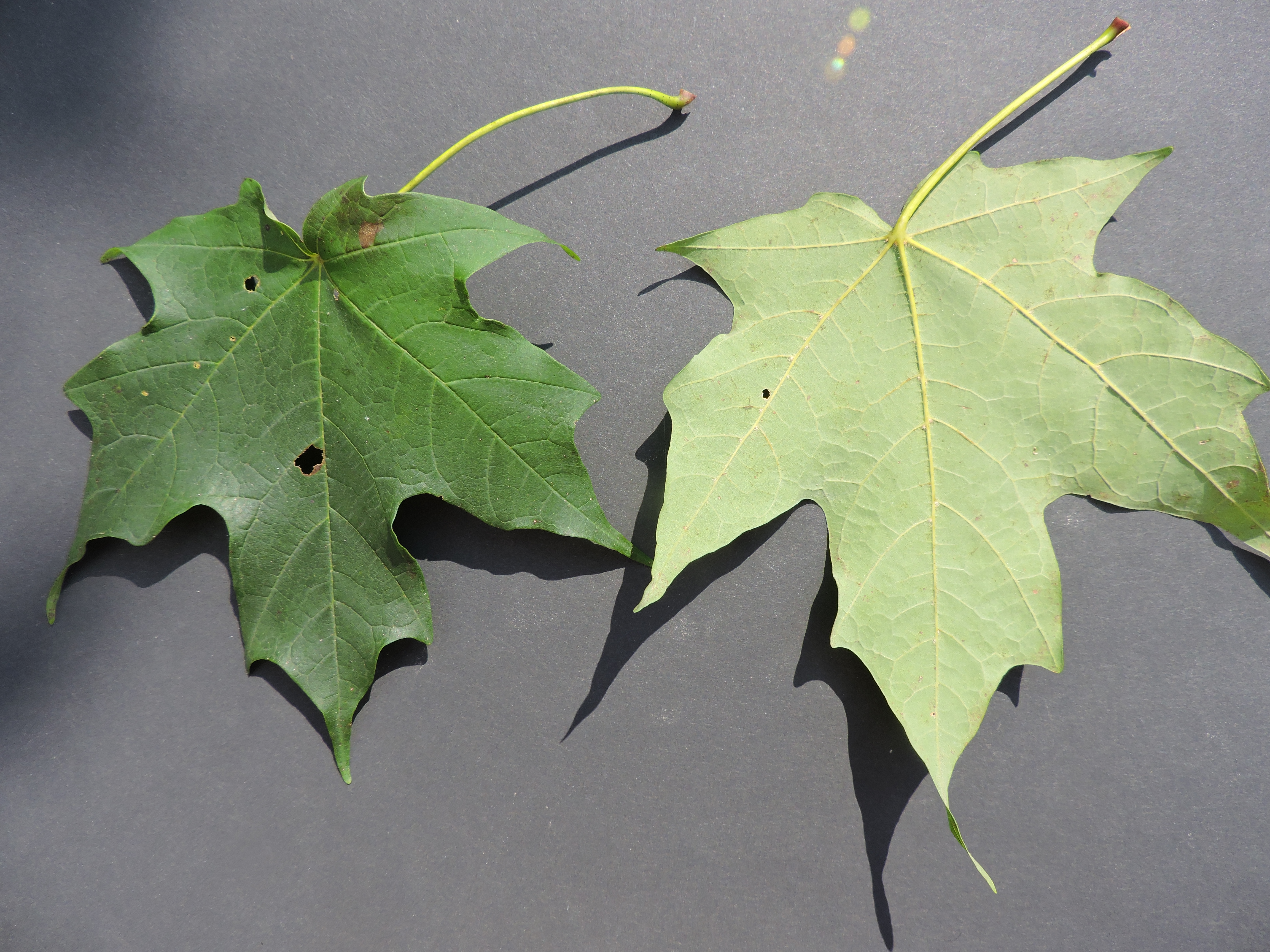
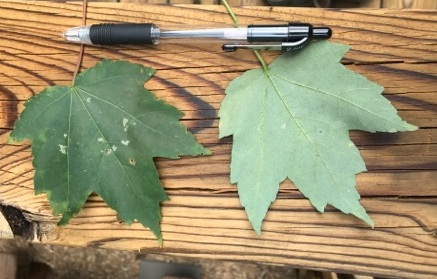
Virginia’s Native Maple Seeds
Samaras are mostly looked at for size and the angle that the two “wings” join together. Sometimes, in deteriorated specimens, the two wings break apart and you only find a half of the samara. So look around on the tree or ground for an intact specimen.
| Species | Botanical Name | Samara length | Angle of samara wings to each other where seeds connect | Color of samara | |
| Red potentially toxic browse, seeds okay
|
Acer Rubrum | Small
7/16 to 7/8” |
1.2-2.6 cm | Wings droop downward, somewhat closed together | Reddish |
| Silver potentially toxic browse, seeds okay |
Acer saccharinum | Large
1-9/16 to 3” |
4-7.5 cm | Wings are broadly open, but still droop downward | |
| Sugar
potentially toxic browse, seeds okay |
Acer saccharum | Medium
7/8 to 1-3/8” |
2.5-3.5cm | Wings have a medium open flare | |
| Southern Sugar | Acer floridanum | Medium
¾-to 1-3/16” |
2-3 cm | Wings have a medium open flare | |
| Black | Acer nigrum | Small
7/16 to 1-3/16” |
1.2-3 cm | Wings have a medium open flare | |
| Striped | Acer pensylvanicum | Small
¾ to 31/32” |
1.8-2.4 cm | Wings flip upward slightly, rather than droop downward | |
| Norway | Acer platanoides | Large
1-3/8 to 2” |
3.5-5 cm | Wings wide open, may flip upward | |
| Mountain | Acer spicatum | Small
7/16 to 13/16” |
1.2-2 cm | Wings flip upward slightly |
(from Common Native Trees of Virginia, Virginia Department of Forestry, used with permission.)
